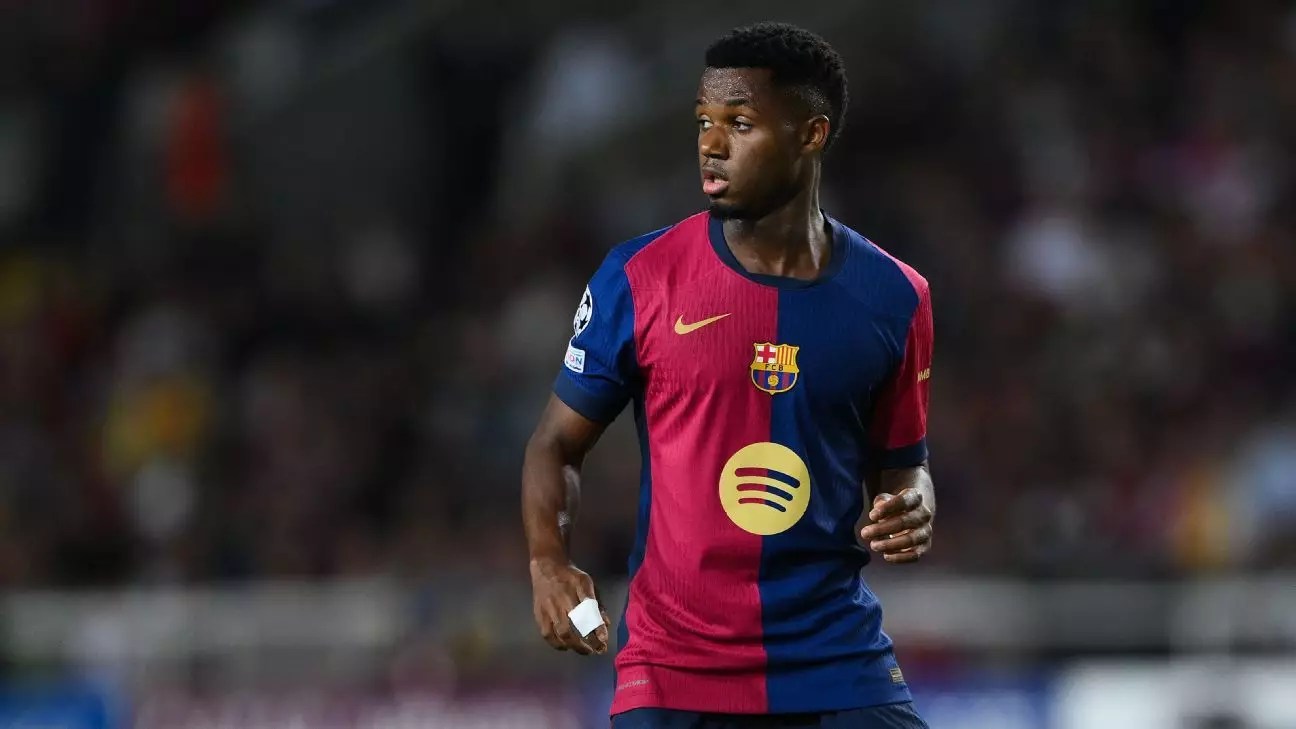As the chill of winter approaches, European football prepares for the much-anticipated winter transfer window. Although it won’t officially open for some time, speculations and rumors regarding potential deals are already swirling, capturing the interest of fans, pundits, and clubs alike. This article delves into the brewing transfer talks, focusing on key players and strategies that clubs might adopt as they navigate the complexities of player movement.
Fati’s Future: A Loan Spell on the Horizon?
Barcelona’s Ansu Fati finds himself at a crucial juncture in his career. After an underwhelming loan spell at Brighton & Hove Albion, where he failed to make a significant impact, the young winger is eager to revitalize his playing time and performance. According to reports, Barcelona is considering loaning out Fati in January, contingent upon successfully identifying a suitable replacement. This strategic approach stems from the club’s recognition of the necessity to balance financial obligations with sporting aspirations.
The 21-year-old has struggled to gain a foothold this season, having played a mere 28 minutes. In a standout match against Young Boys, he was subbed in when the team was already comfortably ahead, offering little opportunity to showcase his skills. With Barcelona’s current predicament requiring them to find a competent winger capable of adhering to salary restrictions, the prospects for Fati’s immediate future hinge significantly on the club’s transfer acumen in the approaching window.
United’s Stand on Garnacho: A Multi-Million Pound Valuation
Across the channel, Manchester United faces its own transfer conundrum with Alejandro Garnacho, who has attracted interest from powerhouses like Barcelona and Juventus. However, United is reportedly demanding a hefty price tag of over £70 million for the talented 20-year-old. While Garnacho expresses frustration over his limited opportunities on the pitch under manager Erik ten Hag, he remains focused on earning a regular place in the starting lineup. The dream of playing for Real Madrid only adds another layer of complexity to his situation, creating tension amidst uncertainty.
The financial barriers imposed by Manchester United signify a common theme across football clubs; the need to balance player aspirations with economic viability. In the realm of modern football, such decisions often come down to a fine line between nurturing talent and capitalizing on their market value.
In a contrasting scenario, Robert Lewandowski’s tenure at Barcelona appears set to continue, with both player and club eyeing an extension. Having joined the Catalan giants with high expectations, his impressive performance thus far has activated a clause in his contract that could prolong his stay until 2026, provided he maintains his current form. This move not only showcases the mutual respect between Lewandowski and the club but also reflects Barcelona’s strategy of investing in seasoned players to ensure competitive stability during tumultuous financial times.
The synergy between players like Lewandowski, who possess vast experience, and a young squad creates a dynamic environment that can potentially yield rich dividends on the pitch.
Meanwhile, Juventus grapples with the fallout from Paul Pogba’s recent doping ban. With the ban reduced to 18 months, there’s speculation that the club might facilitate his departure in January to slim down its wage bill. This situation raises significant questions about player management and club responsibility, especially in light of a challenging financial landscape. Pogba, who at 31 has seen varied fortunes in his career, now faces the opportunity to start afresh, potentially with a new club that values his skills without the accompanying baggage.
The landscape of Juventus’s transfer intentions is equally intriguing, with the club reportedly shifting its focus toward younger defensive talents in the wake of recent injuries. While veteran players have historically dominated transfer discussions, this pivot highlights a broader trend among clubs to cultivate youth for both immediate and long-term benefits.
The tactical shift in targeting younger players, as demonstrated by Juventus’s inquiries into defenders like Jorrel Hato and Maxence Lacroix, reflects a significant trend in football. Clubs are increasingly recognizing the potential of youth to drive performance while simultaneously keeping financial constraints in check. As teams gear up for the winter transfer window, they must weigh the merits of immediate results against the long-term potential of investments in young talents.
The upcoming winter transfer window presents an intricate web of opportunities and challenges for European football clubs. As they navigate player contracts, financial implications, and the demands of competitive sport, the decisions they make during this period will shape not just the remainder of the season, but the future trajectory of their respective squads. The strategies developed in these moments could set the tone for years to come in the ever-evolving landscape of European football.


Leave a Reply